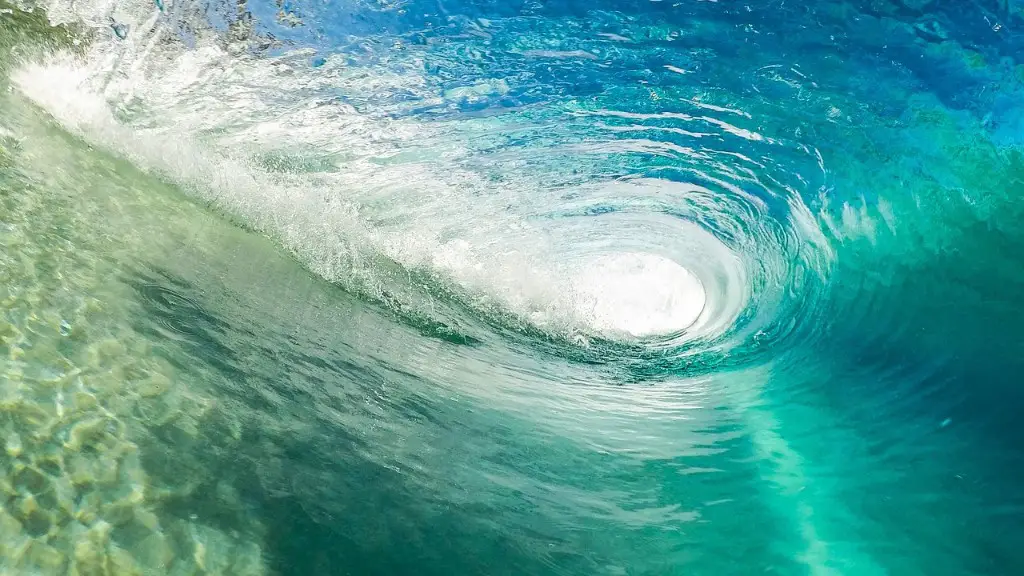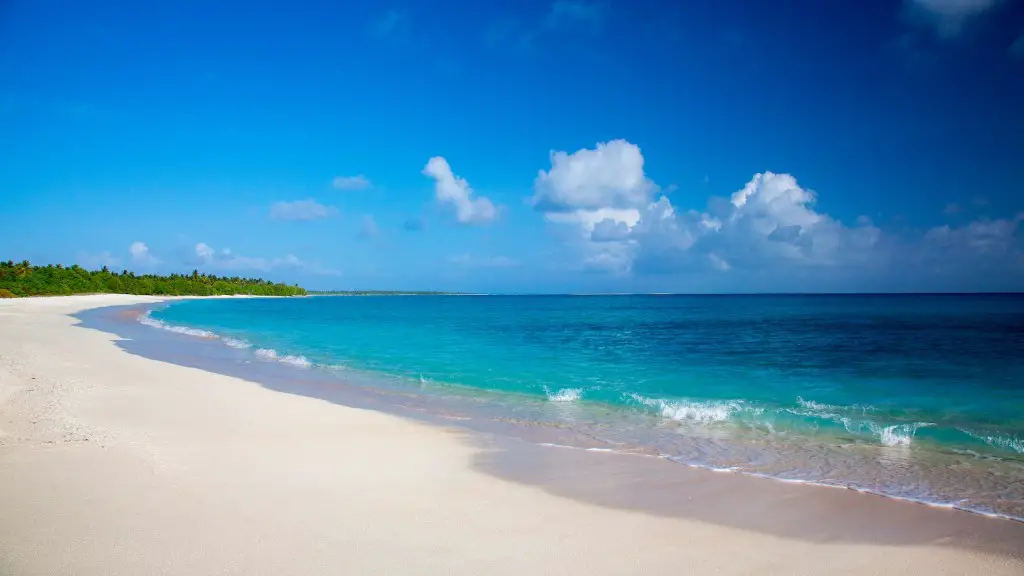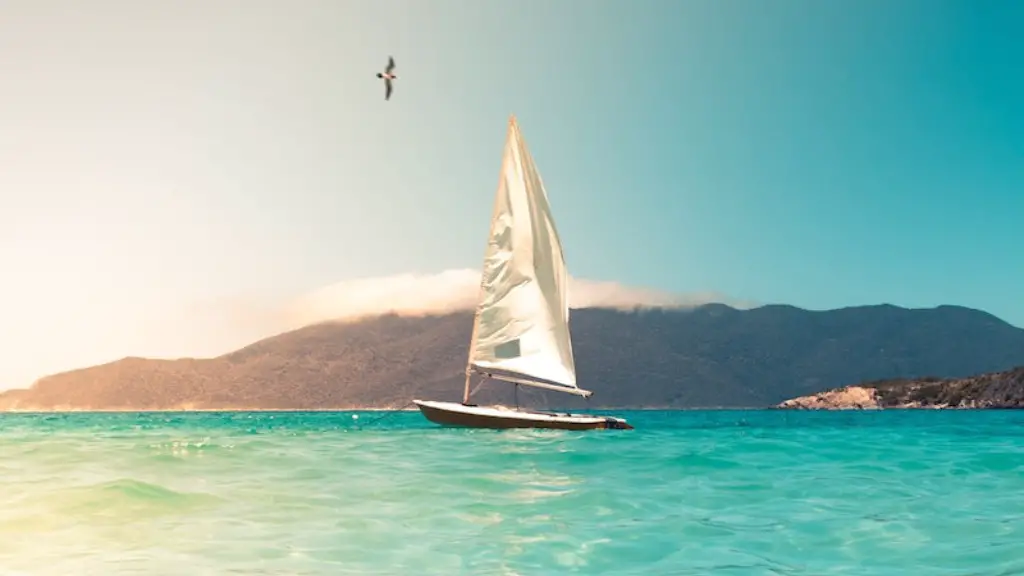Wild and Varied Color Palette of the Caribbean Sea
The Caribbean Sea is a vibrant and varied place, full of life and beauty. The luminous blue seas, undulating coral reefs, and unique sea creatures create an underwater paradise that captivates the traveler. As magnificent as the Caribbean Sea is, what color is it?
What Color is the Caribbean Sea?
The Caribbean Sea is a beautiful and ever-changing mixture of shades and tones. In general, the sea is a vibrant blue, but the waters of the Caribbean Sea contain a rainbow of hues and depths, each contributing to its beauty.
The color of the Caribbean Sea depends on the location, the season, and the depth. The shallower depths of the sea generally have a greener-blue tone to them, while deeper depths appear more of a deep navy blue. The angle at which the sun reflects off the water can also cause the shade of blue to vary.
Along the coastline and in the shallow depths of the sea, near the coral reefs, the water can appear seeming greenish and even aqua, depending on the time of day and the sun’s angle. As one ventures deeper into the Caribbean Sea, the hue of blue deepens to a deep navy blue. The color appears almost black in some parts at its deepest depths. The Caribbean Sea is also known for its bright and vivid blue-green waters, with its blues and greens being almost electric in color.
Influencing Factors
The color of the Caribbean Sea is constantly changing due to multiple factors. One of the many influential factors is the presence of microscopic phytoplankton. These tiny algae are a brilliant greenish color that reflects the sunlight. This causes the water to take on a more greenish hue as the sunlight hits the water.
The amount of sediment in the water can also be a factor. The presence of sediment in the water gives it a more muddy or cloudy appearance, reducing the clarity of the water and resulting in a more brownish hue.
Another influencing factor is reflection and scattering. When there are patches of bright blue sky, the water may take on a brighter blue appearance, while darker skies can cause the waters to appear darker.
Beauty of the Caribbean Sea
When the sun rises above the horizon, the Caribbean Sea turns into an amazing shimmering blue hue. The glimmering blue hues draw in many visitors from all over the world, whether to admire its beauty from a distance or to explore its depths.
As the day progresses, the angle of the sunlight causes the color of the sea to change slightly. At midday, the waters become a bright electric blue, while in the late afternoon the blue can become more of an aqua color.
The depths of the Caribbean Sea also give it a unique and ever-changing color. The deeper you go, the bluer and darker the waters become. At the bottom of the Caribbean Sea are black depths that are impossible to explore.
A Sense of Magic
The color of the Caribbean Sea is constantly changing, creating a sense of magic and wonder. It’s a place of life and beauty, and its ever-changing hues add to its charm and mystique.
The variety of shades, tones, and depth of the Caribbean Sea make it one of the most beautiful and mesmerizing bodies of water on earth. Whether you’re exploring the depths or admiring its beauty from afar, it’s almost impossible not to be captivated by the wild and varied color palette of the Caribbean Sea.
Limiting Harmful Effects
The beauty of the Caribbean Sea is not without its consequences, as overfishing, the usage of plastic, and climate change all contribute to an increase of pollution levels in the region. As many of the forms of marine pollution are largely caused by human activities, it is essential to take steps to limit the effects they have on the Caribbean Sea, and its surrounding environment.
It is vital to ensure that the life within the Caribbean Sea is protected, to ensure it has the opportunity to thrive. This can be accomplished by understanding the different forms of marine pollution, and implementing measures to reduce their impact.
The most common forms of marine pollution include land-based pollution, oil and chemical pollution, toxic wastes, plastic pollution, and the introduction of invasive species.
These forms of marine pollution, if left unchecked, can lead to the destruction of coral reefs and other habitats, increased sedimentation, disruption of the food chain, and the introduction of toxins into the water.
Conservation Efforts
In order to protect the Caribbean Sea, conservation efforts are needed. This can include the enforcement of laws, the establishment of Marine Protected Areas, and the development of sustainable fishing practices.
Such conservation efforts are needed in order to eliminate the threats posed by the different forms of marine pollution, and minimize their impact on the Caribbean Sea and its surrounding environment.
It is also important to limit the use of chemicals and other harmful pollutants, reduce plastic waste, and ensure that oil spills are prevented. Reducing the volume of water pollutants released into the Caribbean Sea will ensure its waters remain a beautiful, safe place for marine life.
Increasing Awareness
The most significant step in protecting the Caribbean Sea is increasing awareness of the issue. This can be done by educating people on the dangers of marine pollution, and the steps they can take to reduce their impact.
Encouraging people to understand the changing landscapes of the Caribbean Sea, and its various ecosystems, is essential to helping them appreciate, protect, and conserve this important waterway. There are a number of organizations and programs available that can help educate people about the environment, and the types of threats it is facing.
By increasing awareness of the issue, it will be possible to create more sustainable practices and protect the Caribbean Sea for future generations.
Environmental Responsibility
The most effective way to reduce the effects of marine pollution on the Caribbean Sea is for individuals to take responsibility for their own actions. This can include using biodegradable products, avoiding the use of single-use plastics, and limiting the amount of pollutants entering the water.
It is possible to make a real difference to the health of the Caribbean Sea, by taking steps to reduce pollution and implement sustainable practices. This can include engaging in clean-up efforts, or engaging in projects that aim to increase public awareness of the issue.
The Caribbean Sea is a unique and beautiful place that must be protected. By understanding the threats it faces, and taking the necessary steps to reduce pollution and protect the various ecosystems, it will be possible to ensure it remains a beautiful, wild and varied place for generations to come.


